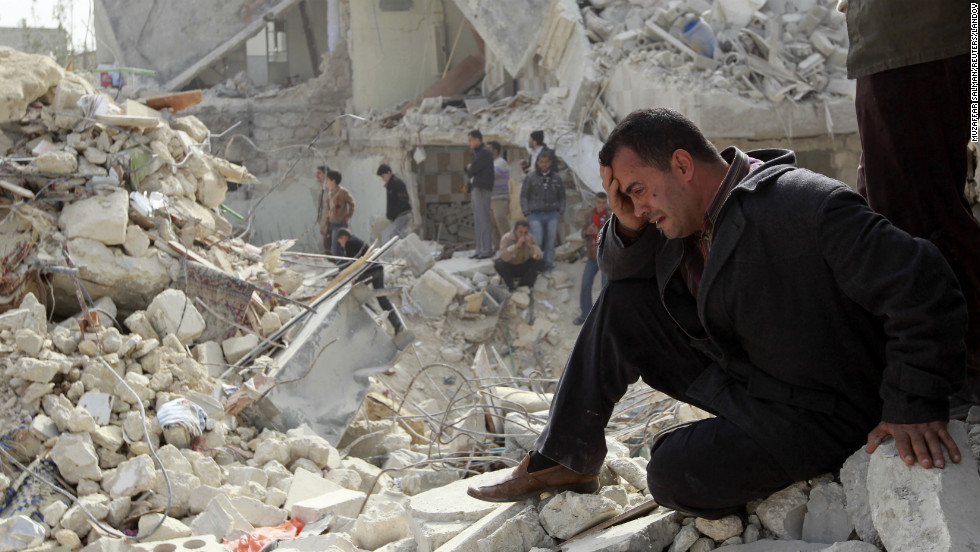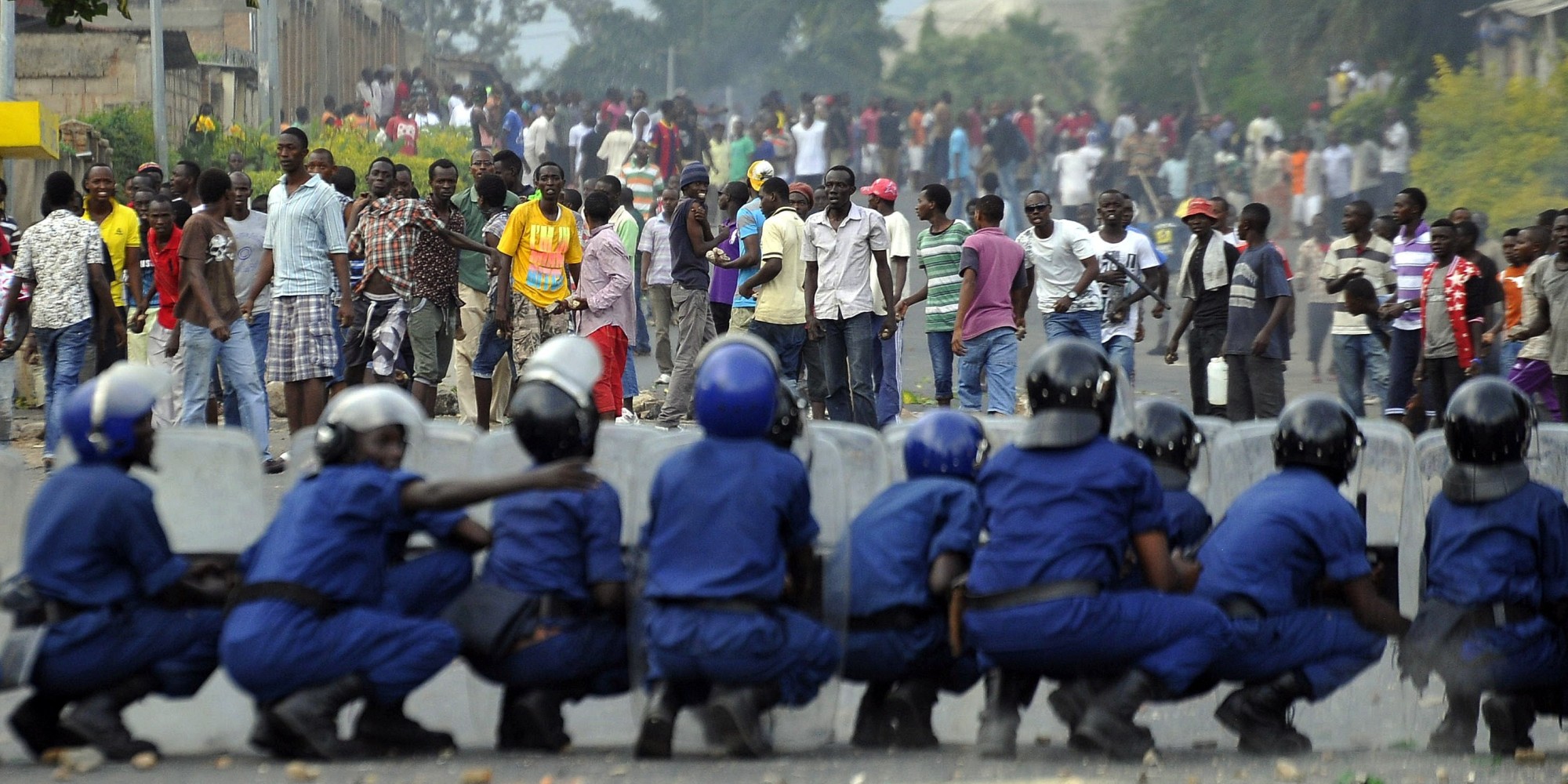[fblike]
 In less than a month, the war in Syria will be entering its fifth year. The conflict has led to the deaths of more than 250,000 people, injured more than a million others, and displaced half of the country’s population. Syrian President Bashar al-Assad appeared headed for defeat in the fall, but the intervention of Russia rescued his regime and has allowed him to reverse the momentum of the conflict. President Barack Obama has refused to provide sufficient support for Syria’s rebel factions, hesitant to get America involved in another sectarian war in the region and despairing that there are no “good” forces to support in the conflict. Experts note that the war has become a proxy battle of American and Russian influence in the Middle East and that a wider war cannot be discounted between Sunni and Shi’ite powers. The United States and Russia have recently agreed to move toward a “cessation of hostilities” later this week, but the agreement excludes attacks on terrorist groups and the tortured nature of that term is likely to help Assad solidify his gains and potentially win the war with significant ramifications for U.S. foreign policy in the Middle East.
In less than a month, the war in Syria will be entering its fifth year. The conflict has led to the deaths of more than 250,000 people, injured more than a million others, and displaced half of the country’s population. Syrian President Bashar al-Assad appeared headed for defeat in the fall, but the intervention of Russia rescued his regime and has allowed him to reverse the momentum of the conflict. President Barack Obama has refused to provide sufficient support for Syria’s rebel factions, hesitant to get America involved in another sectarian war in the region and despairing that there are no “good” forces to support in the conflict. Experts note that the war has become a proxy battle of American and Russian influence in the Middle East and that a wider war cannot be discounted between Sunni and Shi’ite powers. The United States and Russia have recently agreed to move toward a “cessation of hostilities” later this week, but the agreement excludes attacks on terrorist groups and the tortured nature of that term is likely to help Assad solidify his gains and potentially win the war with significant ramifications for U.S. foreign policy in the Middle East.
This topic brief will provide an update on the status of the conflict, discuss the recent agreements trying to wind down the war, and analyze the conflagration’s potential outcomes.
Readers are also encouraged to use the links below and in the related R&D to bolster their files about this topic.





 For American policymakers, Saudi Arabia is deemed as one of the pillars of stability in the Middle East. Despite its export of Wahhabist Islam and its suppression of democratic and gender rights, the kingdom has anchored the interests of Sunni Muslims in the region for the last six decades. Saudi Arabia has also been a reliable American ally, assisting in the Persian Gulf War of 1990-1991 and offering ideas for solving the Israeli-Palestinian dispute. The House of Saud’s leadership in global oil markets has been valuable as well, with the country serving as the de facto leader of the Oil and Petroleum Exporting Countries (OPEC) cartel. However, the growing strength of Iran over the last decade has created significant anxieties in Saudi ranks. With the decline of Western sanctions against the Islamic Republic it is possible that the Iranian economy could overtake Saudi Arabia’s in the long-term, and low oil prices are forcing the kingdom to make choices about how it can sustain its social model without provoking unrest in the coming years. These Saudi anxieties could prove harmful for the Middle East, especially if they cause the regime to engage in risky interventions and some of this is already taking place in Syria and Yemen.
For American policymakers, Saudi Arabia is deemed as one of the pillars of stability in the Middle East. Despite its export of Wahhabist Islam and its suppression of democratic and gender rights, the kingdom has anchored the interests of Sunni Muslims in the region for the last six decades. Saudi Arabia has also been a reliable American ally, assisting in the Persian Gulf War of 1990-1991 and offering ideas for solving the Israeli-Palestinian dispute. The House of Saud’s leadership in global oil markets has been valuable as well, with the country serving as the de facto leader of the Oil and Petroleum Exporting Countries (OPEC) cartel. However, the growing strength of Iran over the last decade has created significant anxieties in Saudi ranks. With the decline of Western sanctions against the Islamic Republic it is possible that the Iranian economy could overtake Saudi Arabia’s in the long-term, and low oil prices are forcing the kingdom to make choices about how it can sustain its social model without provoking unrest in the coming years. These Saudi anxieties could prove harmful for the Middle East, especially if they cause the regime to engage in risky interventions and some of this is already taking place in Syria and Yemen. More than a year after the Ebola virus terrified the world, a new virus is instilling fear into the hearts of millions of citizens throughout the Western Hemisphere. The culprit this time is the Zika virus, a mosquito-borne pathogen that was ignored by health experts for decades. However, a spike in the number of births of children with microcephaly, a rare condition that leads to babies being born with abnormally small heads, to women that are thought to have been infected with the virus has created a renewed sense of urgency in the global health community. Zika is not native to the Western Hemisphere and it was first found in Africa more than sixty years ago. Its spread is a testament to how the world is increasingly one without borders when it comes to health issues and Zika creates yet another headache for Brazil, a nation facing significant economic problems and that is hosting the Summer Olympics this year.
More than a year after the Ebola virus terrified the world, a new virus is instilling fear into the hearts of millions of citizens throughout the Western Hemisphere. The culprit this time is the Zika virus, a mosquito-borne pathogen that was ignored by health experts for decades. However, a spike in the number of births of children with microcephaly, a rare condition that leads to babies being born with abnormally small heads, to women that are thought to have been infected with the virus has created a renewed sense of urgency in the global health community. Zika is not native to the Western Hemisphere and it was first found in Africa more than sixty years ago. Its spread is a testament to how the world is increasingly one without borders when it comes to health issues and Zika creates yet another headache for Brazil, a nation facing significant economic problems and that is hosting the Summer Olympics this year. Although terrorism is not unknown in Indonesia, it had been seven years since the world’s largest Muslim nation was victimized by a large-scale terrorist attack. On Thursday, terrorists reportedly aligned with the Islamic State fired upon a busy shopping district in the capital of Jakarta, killing two people and wounding more than twenty others. Indonesian President Joko Widodo, also known as Jokowi, was quick to condemn the attacks and stated his nation’s resolve not to succumb to the extremist message that the Islamic State propagates. However, there are fears that the attack may be a sign of bigger aims by the Islamic State in Southeast Asia as the group is reportedly looking into ways to extend its reach to weaken international efforts against it in Iraq and Syria. The attacks have also called into question whether Indonesian authorities are doing enough to fight extremism and the radicalization of young Muslim men.
Although terrorism is not unknown in Indonesia, it had been seven years since the world’s largest Muslim nation was victimized by a large-scale terrorist attack. On Thursday, terrorists reportedly aligned with the Islamic State fired upon a busy shopping district in the capital of Jakarta, killing two people and wounding more than twenty others. Indonesian President Joko Widodo, also known as Jokowi, was quick to condemn the attacks and stated his nation’s resolve not to succumb to the extremist message that the Islamic State propagates. However, there are fears that the attack may be a sign of bigger aims by the Islamic State in Southeast Asia as the group is reportedly looking into ways to extend its reach to weaken international efforts against it in Iraq and Syria. The attacks have also called into question whether Indonesian authorities are doing enough to fight extremism and the radicalization of young Muslim men. Since 2013, the European Union (EU) has been worried about the outcome of a referendum on Great Britain’s EU membership. A member of the EU since 1973, Great Britain has often stood for a different set of ideas than its EU counterparts, preferring economic liberalism and less financial regulation than EU bureaucrats in Brussels and rival heads of state in Paris and Berlin. One of Prime Minister David Cameron’s promises upon winning the British parliamentary elections last year was to hold a referendum on Britain’s EU membership. This was interpreted as a sop to Conservative voters that bolted the party for the far-right United Kingdom Independence Party (UKIP), which is fiercely anti-EU. Although a date for the referendum has not been set, Cameron is hoping that he can secure concessions from the EU on immigrant welfare benefits and economic regulations that he can in turn sell to British voters to make an exit from the EU – termed a “Brexit” – unthinkable. Considering the fact that Britain’s exit from the EU would rob the organization of more than 10% of its population and more than 15% of its economic power and the fact that recent polls show support for a “Brexit” rising, extempers need to consider how they should approach “Brexit”-style questions in the coming months as their likelihood of being asked at tournaments should increase.
Since 2013, the European Union (EU) has been worried about the outcome of a referendum on Great Britain’s EU membership. A member of the EU since 1973, Great Britain has often stood for a different set of ideas than its EU counterparts, preferring economic liberalism and less financial regulation than EU bureaucrats in Brussels and rival heads of state in Paris and Berlin. One of Prime Minister David Cameron’s promises upon winning the British parliamentary elections last year was to hold a referendum on Britain’s EU membership. This was interpreted as a sop to Conservative voters that bolted the party for the far-right United Kingdom Independence Party (UKIP), which is fiercely anti-EU. Although a date for the referendum has not been set, Cameron is hoping that he can secure concessions from the EU on immigrant welfare benefits and economic regulations that he can in turn sell to British voters to make an exit from the EU – termed a “Brexit” – unthinkable. Considering the fact that Britain’s exit from the EU would rob the organization of more than 10% of its population and more than 15% of its economic power and the fact that recent polls show support for a “Brexit” rising, extempers need to consider how they should approach “Brexit”-style questions in the coming months as their likelihood of being asked at tournaments should increase. When it comes to the African continent extempers are used to talking about topics such as South Africa’s economy, the continent’s amazing economic potential in the twenty-first century, Chinese interests in the region, Robert Mugabe’s continued misrule of Zimbabwe, and conflict zones such as the Democratic Republic of Congo. What they have been less used to is talking about smaller African nations such as Burundi, but in light of significant political unrest extempers will probably be talking more about this country in the weeks and months ahead. Last April, President Pierre Nkurunziza announced that he would seek a third term. This would be normal under some democratic systems, but Burundi’s constitution, agreed to in 2006 after the end of a thirteen-year civil war, prohibits a president being elected to more than two terms. In light of Nkurunziza’s decision, opposition groups mounted several public protests and elements of the Burundian military sought to depose him in a coup in May. That attempt failed and since that time international observers have worried that Burundi is becoming a cauldron of political unrest, which could break down along ethnic lines and produce another mass genocide on the African continent reminiscent of what took place in Rwanda in 1994. Observers also worry about the radicalization of Burundian refugees and that the nation’s unrest could ignite a multi-national struggle between Burundi, Uganda, and Rwanda and their allies in East Africa. Additionally, Burundi’s unrest provides a test of the African Union’s (AU) ability to protect civilians populations in its member states and its willingness to prevent future crimes against humanity.
When it comes to the African continent extempers are used to talking about topics such as South Africa’s economy, the continent’s amazing economic potential in the twenty-first century, Chinese interests in the region, Robert Mugabe’s continued misrule of Zimbabwe, and conflict zones such as the Democratic Republic of Congo. What they have been less used to is talking about smaller African nations such as Burundi, but in light of significant political unrest extempers will probably be talking more about this country in the weeks and months ahead. Last April, President Pierre Nkurunziza announced that he would seek a third term. This would be normal under some democratic systems, but Burundi’s constitution, agreed to in 2006 after the end of a thirteen-year civil war, prohibits a president being elected to more than two terms. In light of Nkurunziza’s decision, opposition groups mounted several public protests and elements of the Burundian military sought to depose him in a coup in May. That attempt failed and since that time international observers have worried that Burundi is becoming a cauldron of political unrest, which could break down along ethnic lines and produce another mass genocide on the African continent reminiscent of what took place in Rwanda in 1994. Observers also worry about the radicalization of Burundian refugees and that the nation’s unrest could ignite a multi-national struggle between Burundi, Uganda, and Rwanda and their allies in East Africa. Additionally, Burundi’s unrest provides a test of the African Union’s (AU) ability to protect civilians populations in its member states and its willingness to prevent future crimes against humanity.